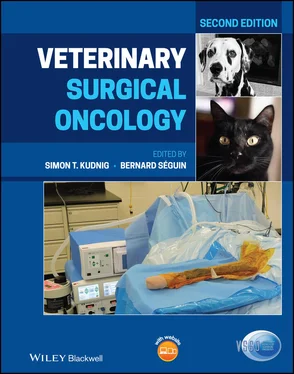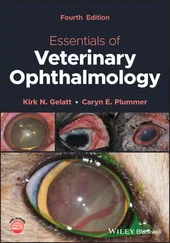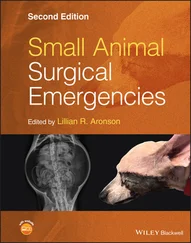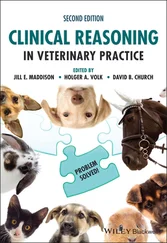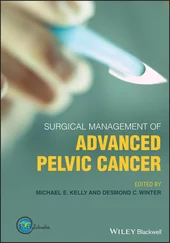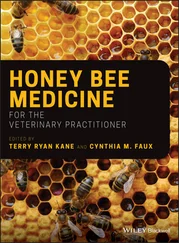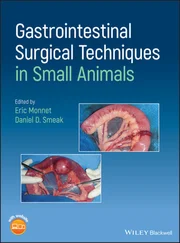Veterinary Surgical Oncology
Здесь есть возможность читать онлайн «Veterinary Surgical Oncology» — ознакомительный отрывок электронной книги совершенно бесплатно, а после прочтения отрывка купить полную версию. В некоторых случаях можно слушать аудио, скачать через торрент в формате fb2 и присутствует краткое содержание. Жанр: unrecognised, на английском языке. Описание произведения, (предисловие) а так же отзывы посетителей доступны на портале библиотеки ЛибКат.
- Название:Veterinary Surgical Oncology
- Автор:
- Жанр:
- Год:неизвестен
- ISBN:нет данных
- Рейтинг книги:5 / 5. Голосов: 1
-
Избранное:Добавить в избранное
- Отзывы:
-
Ваша оценка:
- 100
- 1
- 2
- 3
- 4
- 5
Veterinary Surgical Oncology: краткое содержание, описание и аннотация
Предлагаем к чтению аннотацию, описание, краткое содержание или предисловие (зависит от того, что написал сам автор книги «Veterinary Surgical Oncology»). Если вы не нашли необходимую информацию о книге — напишите в комментариях, мы постараемся отыскать её.
The new edition of the most comprehensive resource on surgical oncology, covering both basic and advanced surgical oncology procedures in small animals Veterinary Surgical Oncology
Veterinary Surgical Oncology
Veterinary Surgical Oncology, Second Edition
Veterinary Surgical Oncology — читать онлайн ознакомительный отрывок
Ниже представлен текст книги, разбитый по страницам. Система сохранения места последней прочитанной страницы, позволяет с удобством читать онлайн бесплатно книгу «Veterinary Surgical Oncology», без необходимости каждый раз заново искать на чём Вы остановились. Поставьте закладку, и сможете в любой момент перейти на страницу, на которой закончили чтение.
Интервал:
Закладка:
As an adjuvant to surgery, the co‐injection of lipoplexes bearing herpes simplex virus thymidine kinase and canine interferon‐β genes at the time of surgery have been performed combined with the periodic administration of a subcutaneous genetic vaccine. This vaccine is composed of tumor extracts and lipoplexes carrying the genes of human interleukin‐2 and human granulocyte‐macrophage colony‐stimulating factor. This treatment significantly increased the rate of local disease‐free from 11 to 83% and distant metastases‐free from 44 to 89% in the dogs, as compared with surgery‐only‐treated controls. Compared to surgery alone, the treatment provided a significant 7‐fold increase in overall survival and >17‐fold increase in metastasis‐free survival. This approach seems to be able to significantly delay or prevent postsurgical recurrence and distant metastasis, increasing disease‐free and overall survival, and maintaining the quality of life (Finocchiaro and Glikin 2012; Finocchiaro et al. 2015).
Shin et al. tested four canine melanoma cell lines with high‐dose ascorbate in vitro. All cell lines exhibited reduced viability in a dose‐dependent manner. The authors suggested that in vitro high‐dose ascorbate has an anticancer effect on canine melanoma cell lines and advise further in vivo investigation (Shin et al. 2018).
In an in vitro canine melanoma cell line, plasmids encoding canine IL‐12 under constitutive and fibroblast‐specific promoters without the gene for antibiotic resistance were able to provide feasible tools for controlled gene delivery. In vivo studies showed a statistically significant prolonged tumor growth delay of CMeC‐1 tumors compared to control vehicle‐treated mice after intratumoral gene electrotransfer. The authors mention that this could be used for the treatment of client‐owned dogs (Lampreht et al. 2015, 2018).
Safety and immunogenicity of a potential checkpoint blockade vaccine for canine melanoma have been tested, with a mixture of three replication‐defective chimpanzee‐derived adenoviral vectors, one expressing mouse fibroblast‐associated protein (mFAP) and the others expressing canine melanoma‐associated antigens Trp‐1 or Trp‐2 fused into Herpes Simplex‐1 glycoprotein D, a checkpoint inhibitor of herpesvirus entry mediator (HVEM) pathways. All dogs responded with increased frequencies of mFAP‐specific activated CD8+ and CD4+ T cells. Further testing of this checkpoint blockade vaccine combination in dogs with melanoma is necessary (Kurupati et al. 2018). The rapidly expanding field of cancer immunology and immunotherapeutics means that rational targeting of MM in both humans and dogs should enhance treatment outcomes in veterinary and human patients.
Feline Injection‐Site‐Associated Sarcoma (FISAS)
A causal relationship has been reported between vaccination and the development of STS at injection sites in cats. Most vaccine‐associated sarcomas are categorized as FSA, but other histologic variants include rhabdomyosarcoma, myxosarcoma, chondrosarcoma, undifferentiated sarcoma, and malignant fibrous histiocytoma. Many of these sarcomas are associated with inflammation (Couto et al. 2002). The initial reports of a possible relationship between vaccination and STS began in the late 1980s and early 1990s (Hendrick and Goldschmidt 1991). Kass et al. reported that in cats receiving FeLV vaccination within two years of tumorigenesis, the time between vaccination and tumor development was significantly ( P = 0.005) shorter for tumors developing at sites where vaccines are typically administered than for tumors at other sites. Univariate analysis, adjusted for age revealed associations between FeLV vaccination, rabies vaccination at the cervical/interscapular region and at the femoral region, with STS development at the vaccination site within one year of vaccination. In a large, prospective, case‐controlled trial, neither a specific vaccine brand nor a manufacturer was found to be associated with sarcoma development. Interestingly, there was evidence to suggest that certain long‐acting injectable drugs may also be associated with the formation of sarcoma (Kass et al. 2003). STS developing adjacent to the site of microchip implantation has been reported in a cat (Daly et al. 2008), and dog (Vascellari et al. 2006).
Most often younger cats are affected (6–7 years), with a second peak at 10–11 years. FISAS usually occur in the subcutis. In contrast, non‐injection site‐associated FSAs are often dermal in origin (Kass et al. 1993). One case has been reported suffering from hypertrophic osteopathy with concurrent FISAS (Salgüero et al. 2015). The reported prevalence in Poland differs between 0.1 and 0.85% in general and referral clinics, respectively (Kliczkowska et al. 2015). The incidence risk of FISAS per year in the UK has been estimated to be 1/16 000–50 000 cats registered by practices, 1/10 000–20 000 cat consultations, and 1/5000–12 500 vaccination visits (Dean et al. 2013). Early in the new millennium, the risk of developing a sarcoma in North America was evaluated at 0.63 sarcomas/10 000 cats and 0.32 sarcomas/10 000 doses of all vaccines (Gobar and Kass 2002). The number of vaccines administered increases the risk of developing FISAS. The risk for a cat to develop a sarcoma after administration of a single vaccine is 50% higher than the risk of a cat not receiving any vaccine. The risk for a cat given two vaccines is approximately 127% higher, and the risk for a cat given three to four vaccines is 175% higher (Kass et al. 1993).
FISAS are best diagnosed by biopsy as cytology is not reliable. A wedge or punch biopsy must be taken from a part of the mass that later will be included in the surgical resection.
MRI and/or CT of the tumor and thorax is indicated to look for pulmonary and skip metastases and evaluate size and extent of the tumor as these masses often have tendrils extending to or into underlying muscles and other tissues like bony structures (spinous process, scapula). In 10–25% of cases, pulmonary metastases are found. The lungs are the most common site for FISAS metastases, although they can also occur in the subcutaneous tissue, liver, and lymph nodes. Therefore, draining lymph nodes should be palpated and assessed by cytology and diagnostic imaging (Kuntz et al. 1997; Romanelli et al. 2008; Rousset et al. 2013). Skip metastases are highly correlated with tumor recurrence ( P = 0.001) (Zardo et al. 2016).
Dual‐phase CT angiogram and MRI identify a similar number of peritumoral lesions. The extensive overlap between imaging features of neoplastic and nonneoplastic lesions precludes definitive identification of neoplastic peritumoral FISAS lesions using CTA or MRI (Nemanic et al. 2016).
STS grading system used in canines, depth of infiltration, surgical margins, and Ki‐67 index did not relate to recurrence. Instead, the size of the tumor, measured after formalin fixation, with an optimal cutoff of 3.75 cm, and the mitotic count, with an optimal cutoff of 20 mitoses/10 HPF were prognostic for recurrence and survival time (Porcellato et al. 2019). In another study, grade using the canine criteria was prognostic for metastasis but no local recurrence (Romanelli et al. 2008). In a study of cats with soft tissue sarcomas that included FISAS and non‐FISAS, modification of the criteria used to grade soft tissue sarcomas in canines was applied and was prognostic for survival time: median survival time for cats with low‐grade tumors was 900 days, with intermediate grade 514 days, and high grade 283 days (Dobromylskyj et al. 2021). In this modified system, mitotic score and tumor necrosis score were the same as in canine tumors, but inflammation score was used instead of tumor cell differentiation score (Dobromylskyj et al. 2021).
Читать дальшеИнтервал:
Закладка:
Похожие книги на «Veterinary Surgical Oncology»
Представляем Вашему вниманию похожие книги на «Veterinary Surgical Oncology» списком для выбора. Мы отобрали схожую по названию и смыслу литературу в надежде предоставить читателям больше вариантов отыскать новые, интересные, ещё непрочитанные произведения.
Обсуждение, отзывы о книге «Veterinary Surgical Oncology» и просто собственные мнения читателей. Оставьте ваши комментарии, напишите, что Вы думаете о произведении, его смысле или главных героях. Укажите что конкретно понравилось, а что нет, и почему Вы так считаете.
